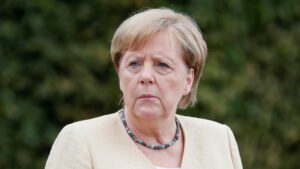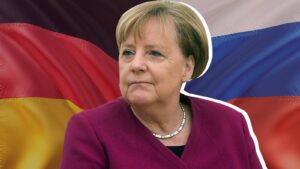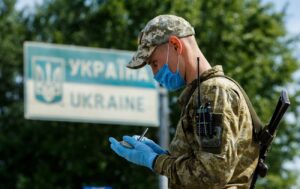
Germany wants the agreement on the transit of Russian gas through Ukraine to be prolonged as soon as possible, German Chancellor Angela Merkel said.
“Our cooperation in the sphere of energy is very important. It already exists, but it will continue, also because there will be further traffic through the Ukrainian gas transport system from Russia to Europe. I have spoken about that with the Russian president [during the visit to Moscow on August 20] that we want to prolong the agreement, which is in effect until 2024, as soon as possible. We will also speak about that in Europe and with the companies that are associated with that here,” Merkel said at a press conference with Ukrainian President Volodymyr Zelensky in Kyiv on Sunday.
Germany will also have its own special envoy on transit issues, Merkel said.
“We agree with the Americans that gas cannot be used as a weapon. And therefore, we will be holding these talks with the Americans,” Merkel said.
“It has to be said that Nord Stream 2 is not a German-Russian project, there are companies from Germany, the Netherlands, and France there. And therefore it’s a European-Russian project, it is subject to European law, it is subject to the law of the Third Energy Package because we are not fully free in regulation, but should cite exactly that, therefore we didn’t hold these talks from the German side, but we supported that on the European side,” she said.
Merkel said Ukraine needs to develop in the direction of climate neutrality.
“We will export gas from Russia to Europe after 2024, and it’s important here that Ukraine should stay a transit country, and it’s important that this agreement should stay, and then step by step – it’s very important to Russia – Ukraine should also develop in the direction of climate neutrality. Germany should achieve that by 2045. That is why gas consumption will decrease, and then gas will not go on Nord Stream or via Ukraine’s gas transport system, and then Ukraine should be ready for what can be done then,” Merkel said.
One of the possibilities is partnership in the sphere of green energy, namely on hydrogen, she said.
“But it’s not a problem that can replace transit via the Ukrainian gas transport system from 2024. However, due to the renewable sources of energy, which can be expanded in Ukraine, it is possible to help here to produce green hydrogen by means of hydrolysis, by means of green energy from renewable sources of energy and use it,” the chancellor said.

German Chancellor Angela Merkel will visit Russia on August 20 and will travel to Ukraine on August 22, German government spokesperson Steffen Seibert told reporters in Berlin on Friday.
“The chancellor will visit Moscow on Friday and Kyiv on Sunday,” Seibert said.

In Ukraine, new border crossing rules have been introduced for all unvaccinated persons who have been in Russia or India for more than seven days over the past two weeks, according to the Coronavirus Info Telegram channel.
In particular, a mandatory 14-day self-isolation is established for all unvaccinated persons who have been in Russia or India for more than seven days in the last two weeks.
It is noted that crossing the state border for Ukrainians arriving from any country is unhindered if there is a full course of vaccination or a 063-O certificate of the first vaccination.
“Foreigners are required to have an insurance policy and one of the documents: negative PCR test (72 hours in advance), negative antigen test (72 hours in advance), and a full course of vaccination,” the message says.
It is emphasized that in the absence of the necessary documents, the Vdoma application is installed and the person begins self-isolation after 72 hours, if the result of testing for COVID-19 by PCR or rapid testing for the determination of the SARS-CoV-2 coronavirus antigen, made already in Ukraine after crossing the border, is positive.
“If it is impossible to use the Vdoma application, the person will be under observation,” the message says.

Ukraine is changing the rules for crossing the border, in particular, it will oblige those entering from Russia and India to undergo 14-day self-isolation, Health Minister Viktor Liashko said during a government meeting on Wednesday.
“Unvaccinated foreigners and Ukrainians who arrived from Russia and India will be subject to special control. If they have spent the last seven days in these countries, they will be subject to mandatory self-isolation or observation for 14 days without the possibility of early termination,” he said.
“The new Delta coronavirus strain is actively spreading in Europe. A large outbreak is recorded in Russia. We propose new border crossing rules, which will take effect seven days after the official publication, in order to reduce the possibility of the spread of the virus in Ukraine. Also due to these changes, we we will be able to conduct better epidemiological investigations if a carrier is identified,” the minister said.

Ukraine in January-June 2021 increased imports of coal and anthracite by 17.6% compared to the same period in 2020, to 10.145 million tonnes.
According to the State Customs Service, coal was imported for $984.046 million, which is 4.1% more than in January-June 2020 ($945.346 million).
Coal came from the Russian Federation for $587.543 million (a share in imports – 59.71%), the United States – for $221.273 million (22.49%), Kazakhstan – for $114.96 million (11.68%), other countries – for $60.27 million (6.12%).
Coal exports by Ukraine for the six months of 2021 amounted to 204 tonnes for $25,000, in particular to Hungary – for $11,000, Belarus – for $7,000, Bulgaria – for $7,000. In the same period last year, no export was carried out.

The volume of trade between Ukraine and Russia has dropped by nearly 84% over the past six years, Ukrainian Prime Minister Denys Shmyhal said at a joint press conference with European Commission Vice-President for Interinstitutional Relations and Foresight Maros Sefcovic in Kyiv.
“In fact, the volume of annual trade from Russia has dropped over the past six years by nearly 84%, from $37 billion to $7 billion. Trade turnover between Russia and Ukraine is gradually declining. At the same time, the volume of trade [between Ukraine and] Europe has grown to over 40%, which means it has grown by more than fivefold. The replacement of markets is underway, and Ukraine is learning to manufacture goods of higher quality, in line with European standards, which meets the course of our development,” Shmyhal said, when asked by Interfax-Ukraine what share of Ukrainian exports has been affected by Russia’s recently-introduced ban on imports of certain products from Ukraine and how the Ukrainian government would respond to it.
Shmyhal insisted that he was talking not about “trade wars” but about the Ukrainian market’s natural reorientation toward the European and other markets.
As was reported earlier, the Russian government extended a list of products that cannot be imported from Ukraine on June 28, 2021.